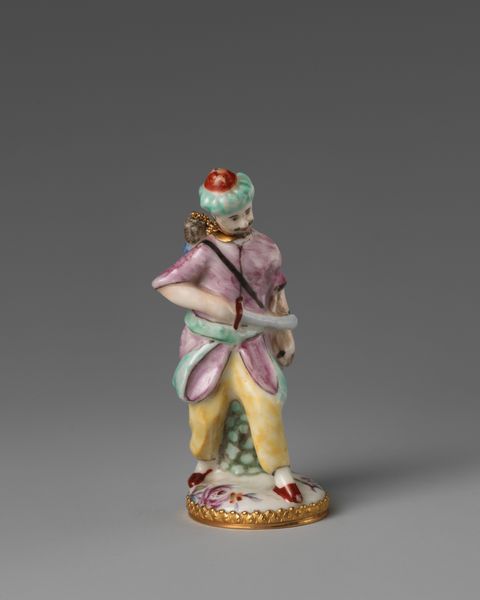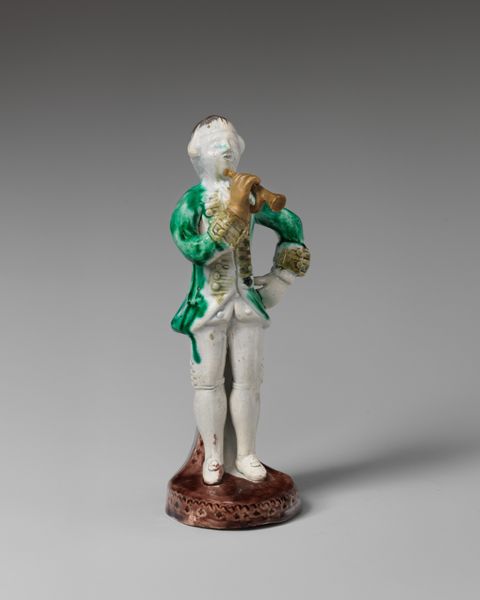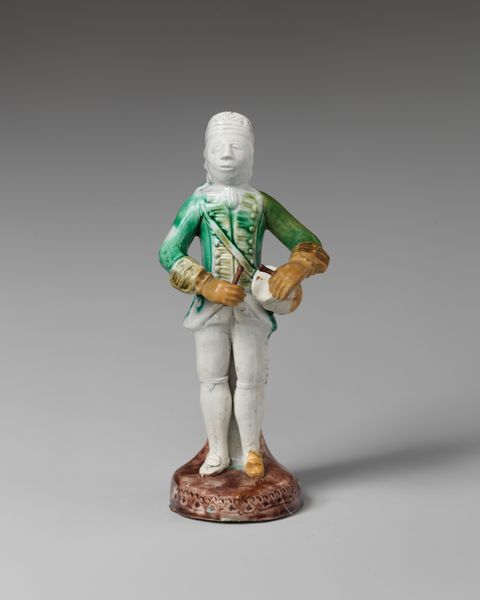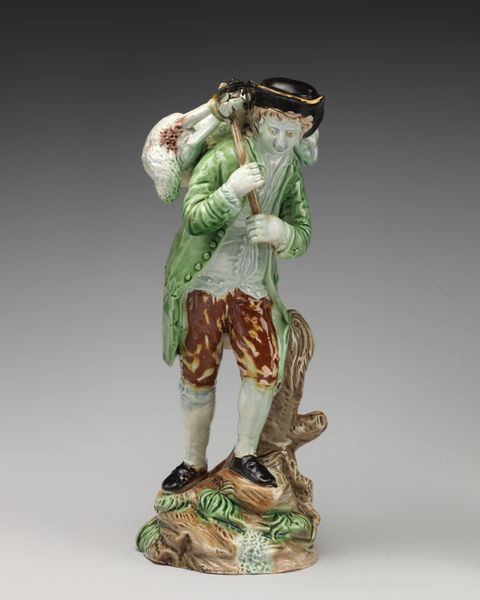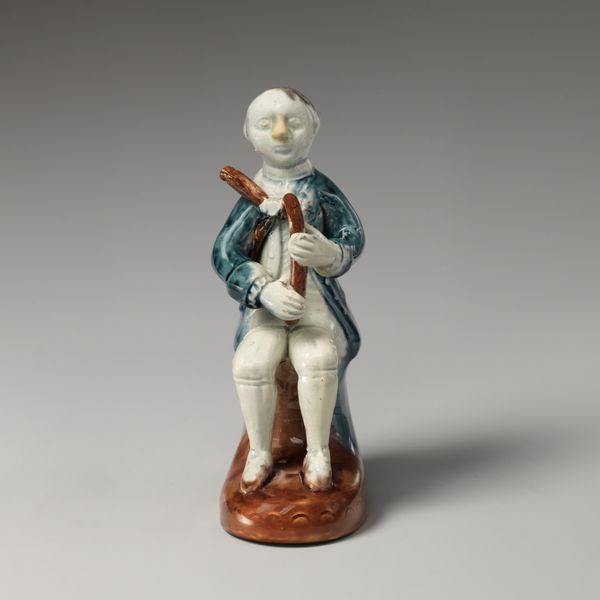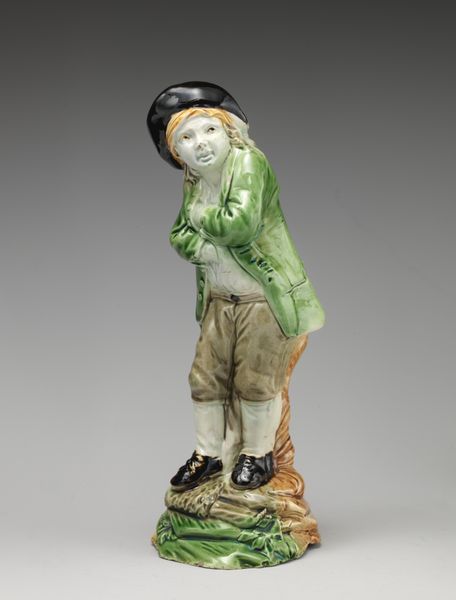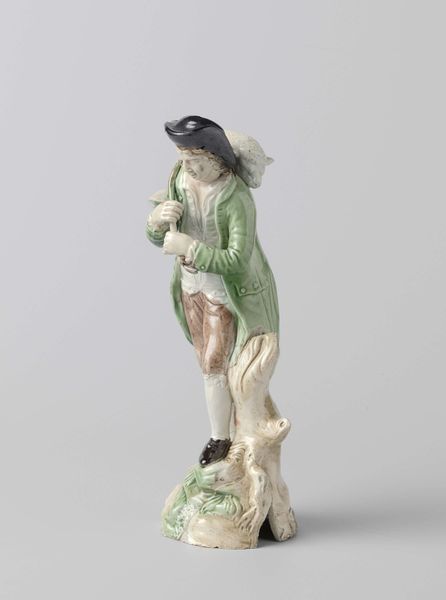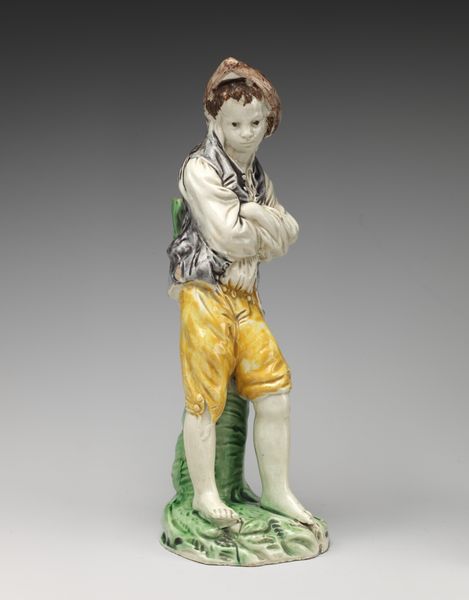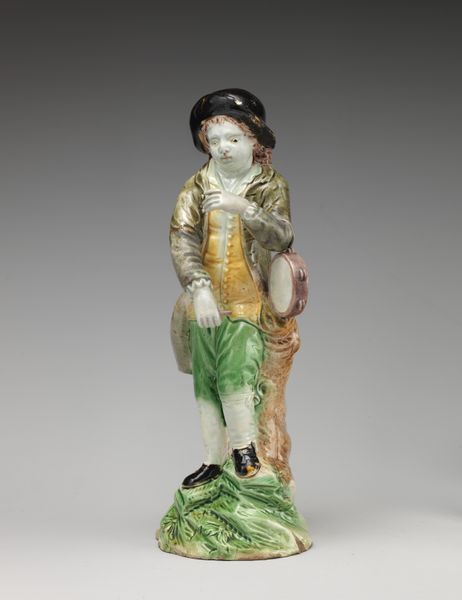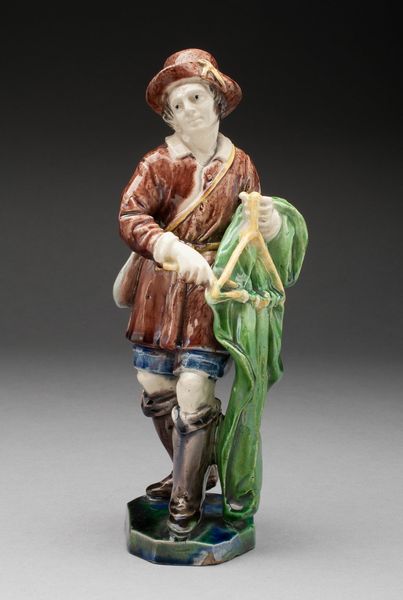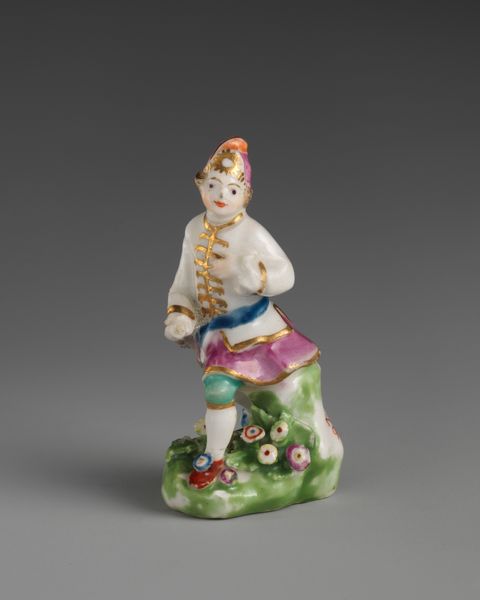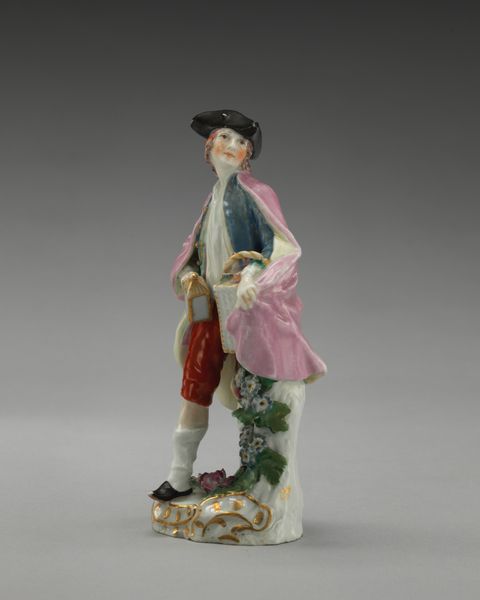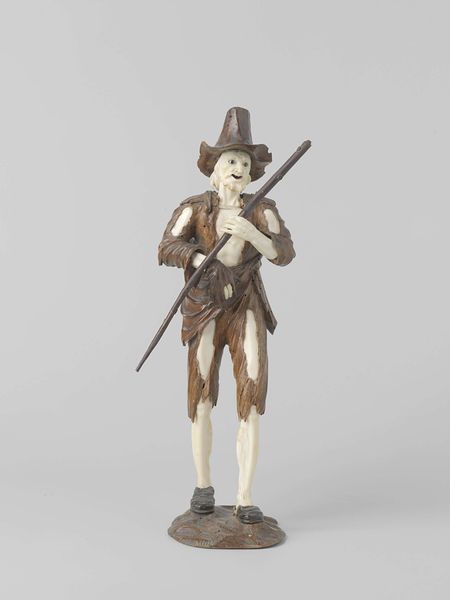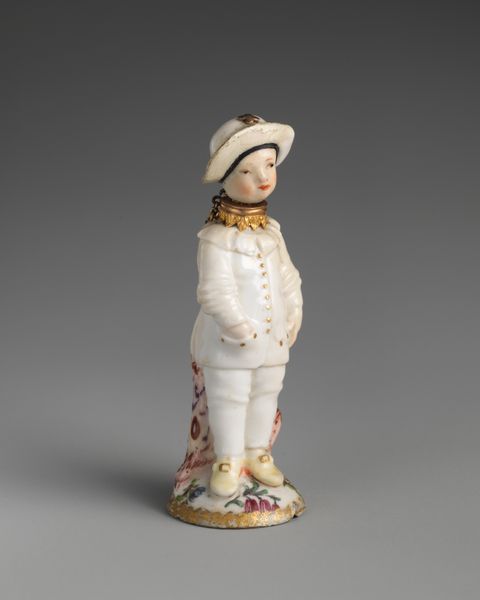
ceramic, sculpture
#
ceramic
#
soldier
#
sculpture
#
decorative-art
#
rococo
Dimensions: Height: 6 in. (15.2 cm)
Copyright: Public Domain
This six-inch figure of a soldier was made in the Whieldon factory, probably in the mid-18th century, using earthenware with colored glazes. The piece’s appeal lies in the way its earthenware body soaks up the colors, bleeding them softly across the surface. This was achieved through a technique known as “Whieldon ware,” named after the Staffordshire potter Thomas Whieldon, who perfected the method of combining contrasting colored glazes like blues, greens, browns and yellows, creating mottled and vibrant effects. Of course, the charm of these figures belies a dark reality: the intense labor of the pottery industry, where individuals often worked long hours under dangerous conditions. These wares were made for a rising middle class, eager to demonstrate their good taste and social position. Appreciating the skill involved in its production allows us to consider the broader social context in which it was created. By recognizing the labor and production involved, we gain a deeper understanding of its cultural significance.
Comments
No comments
Be the first to comment and join the conversation on the ultimate creative platform.
